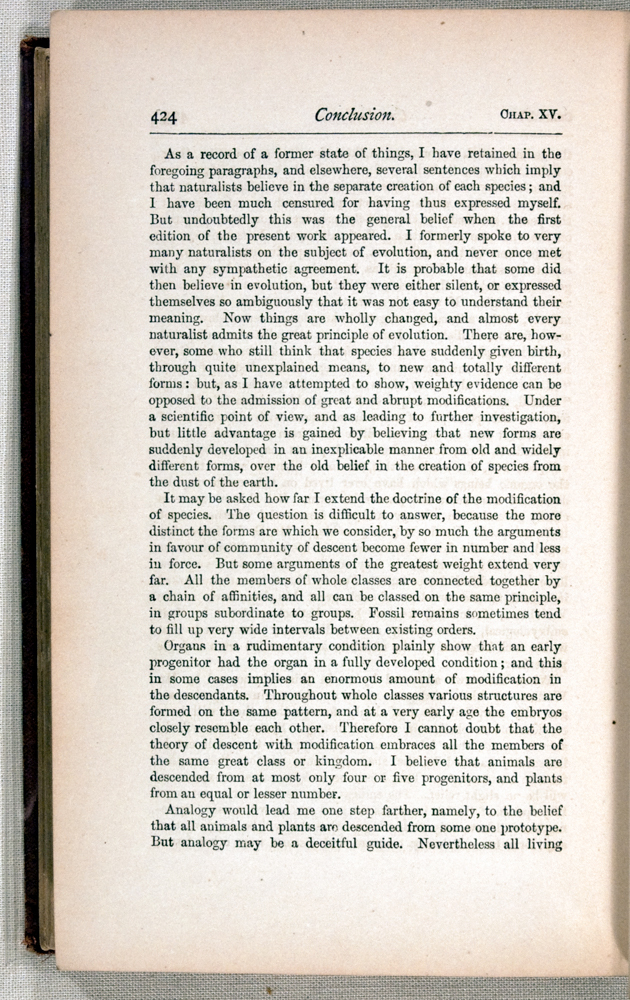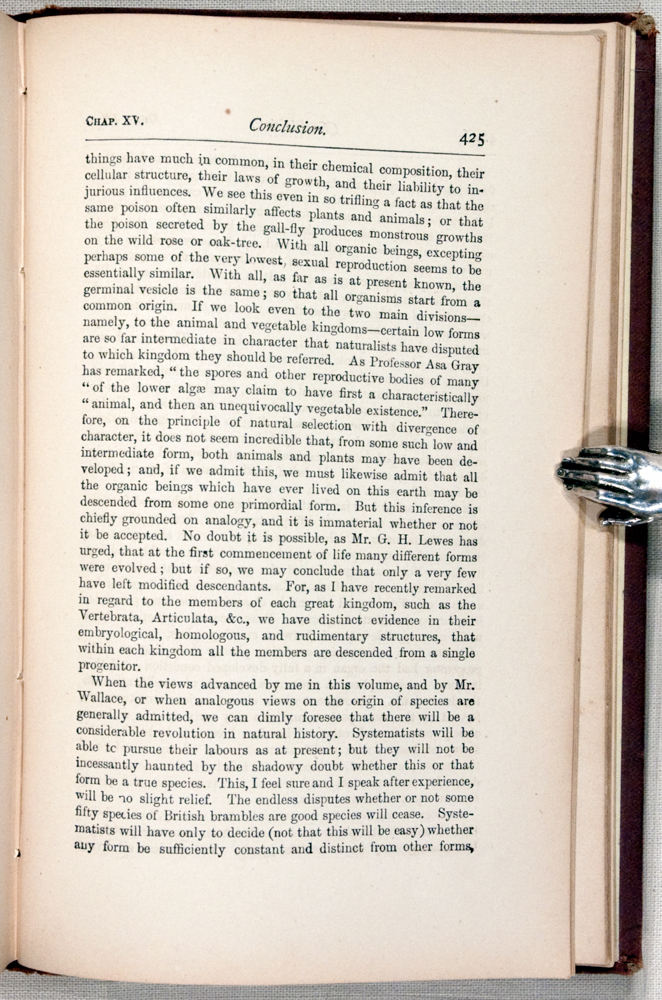Charles Darwin, On the Origin of Species, American edition, 1873.
Charles Darwin. On the Origin of Species, Or the Preservation of Favoured Races in the Struggle for Life. New edition. New York: Appleton, 1873.
The American edition of Origin of Species was arranged by Gray with the New York firm of Appleton, a publishing house founded by a dry-goods dealer, Daniel Appleton, who began to offer books in his store and in 1831 published his first title, a collection of Christian quotations called Crumbs from the Master’s Table. Gray himself would have preferred Ticknor and Fields, Longfellow’s and Emerson’s publisher, but since there was no international copyright protecting Darwin’s rights and Appleton had announced his intention to publish regardless, he made a virtue of necessity and tried to get royalties for Darwin. The 5 percent he negotiated netted Darwin only 22 pounds of the first 2,500 copies. Darwin kindly offered those royalties to Gray, an indication of their closeness, “as I wholly and absolutely shall owe all to you” (February 1, 1860). Darwin made corrections specifically for the American edition, adding to the complicated publication history. Appleton became Darwin’s publisher. The appearance in print of the American edition of Origin of Species a year later only confirmed what Agassiz’s and Gray’s friends in Cambridge already knew: that the falling-out between the two most eminent members of the Harvard faculty was a train-wreck no one could stop anymore. As Darwin was casting his net wider and wider (“It would be a very curious point ... to compare the list of European plants in Tierra del Fuego ... with those in N. America”), Gray’s role expanded too. Gray had just begun working on the specimens sent to him by Charles Wright, the official botanist on the North Pacific Exploring Expedition, and found a surprising number of species common to eastern North America and eastern Japan—an observation that would, in due course, deal quite a blow to Agassiz’s pet idea of “separate creations.” At the meeting of the American Academy of Arts and Sciences in Charles Greely Loring’s Boston home on January 11, 1859, Gray announced, in Agassiz’s presence, that to attribute the distribution and origin of species to divine will would end empirical science as such.
But Darwin was his own best advocate. In a long passage explaining his own theory of the common origin of all living beings (shown here), Darwin quickly rehearsed the central facts of Gray’s discoveries: “It is indeed a remarkable fact to see so many of the same plants living in the snowy region of the Alps and the Pyrenees, and in the extreme northern parts of Europe, but it is far more remarkable, that the plants on the White Mountains, in the United States of America, are all the same with those of Labrador, and nearly all the same, as we hear from Asa Gray, with those on the loftiest mountains of Europe.” Darwin then continued to mock those naturalists who, faced with such coincidences, would still believe in the idea of separate creation. In one single paragraph—and with the help of his American friend Gray—Darwin had completely eviscerated his opponents. In his “Conclusion” to Origin, Darwin made clear that he was out to trouble far more than the fixity of species. Citing, once again, his friend Gray, he mentioned examples (the spores of lower algae) that challenged even the boundaries between the animal and the vegetable kingdom, suggesting, though he was careful to call it an “inference” only, that all living beings might have descended from “some one primordial form” (p. 425).


